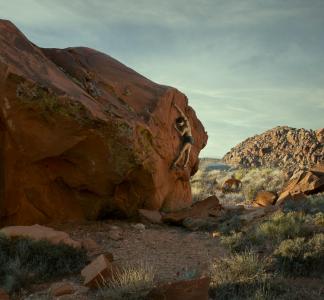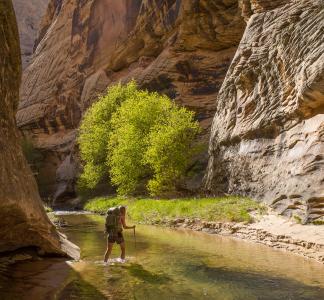Mason Cummings, The Wilderness Society
Protecting Wyoming’s Wilderness Study Areas
Across Wyoming’s high deserts, basins, and plains are areas of astounding wilderness quality lands. From colorful, maze-like badlands, to towering buttes, sand dunes, striking uplifts, and river canyons, these wilderness study areas are under threat from some members of Congress who would like to open them to development. We believe that these areas deserve more protection and permanent designation, not less.
Wyoming’s wilderness study areas comprise thousands of acres of wildlands providing habitat for animals like the mule deer, the sage-grouse, bison and other species.
The threat
Wyoming’s 45 wilderness study areas span the state and play host to incredible landscapes. The Northern Red Desert has wide open spaces and nine WSAs that offer unparalleled scenery, solitude, and wildlife habitats. Greater Adobe Town, another area, is exceptional for backcountry recreation and exploring natural and human history.
Unfortunately, some members of Congress want to release these areas without any evaluation as to how to protect them. This release would entail opening them to oil and gas development, mining, new roads, and other harmful activities.
The Wilderness Society wants to conserve these wilderness study areas and continue to evaluate regions that have wilderness-quality lands.
What we're doing
-
Advocating legislation
Urging members of Congress to protect Wyoming’s 45 wilderness study areas via legislation.
-
Collaborating with communities
Working with local communities to collaborate and decide what the best future management and designation of these areas should be.
-
Creating coalitions
Building coalitions with the people who value these areas.



